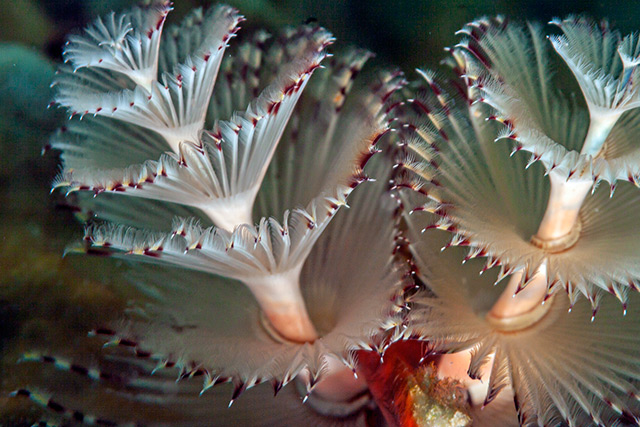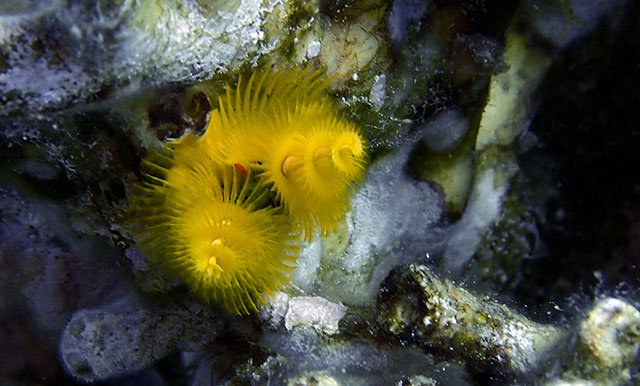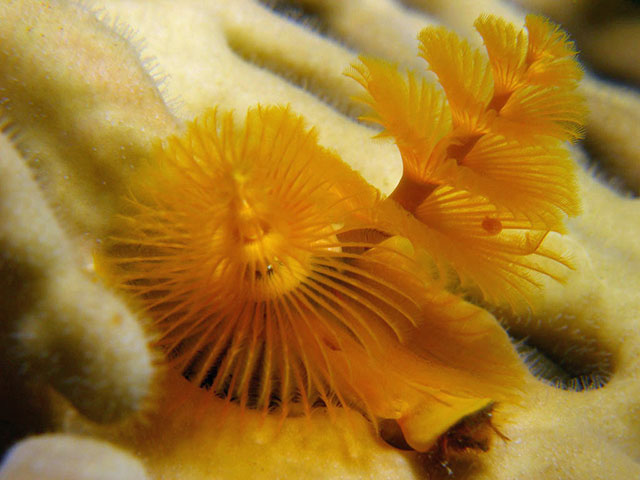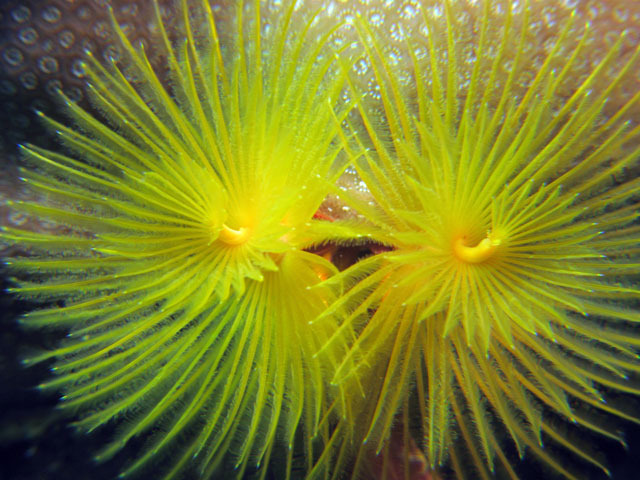Colourful Christmas tree worms are captivating during any dive, adding a touch of festive magic to coral reefs around the world.
What are Christmas tree worms?
They might look like colourful Christmas trees but they’re actually segmented worms. Most of their structure is hidden in tubes within the coral with only their crowns or Christmas trees protruding. These creatures can live for 40 years!
Their scientific name is Spirobranchus giganteus, meaning Giant Spiral-Gills. Although the visible part is only 1.5 cm long, together with its hidden part it is in fact one of the largest worms in its family. The branching crown is important for respiration, hence the “spiral-gills” name.
Each worm has two crowns or Christmas Trees. The worms come in a myriad of colours, but an individual’s two crowns are always the same colour. As well as being used in respiration, the the feathery Christmas Tree gathers food, wafting it down to the worm’s mouth.
On sensing danger, the worm quickly retracts its crown into its tube in the coral and closes the entrance with a trapdoor called an operculum. It will stay down there for about a minute, before re-emerging very slowly to check that the danger has gone.
There are both male and female Christmas tree worms and they are choosy; spending their entire life on the same coral – often massive porites. They are important for the health of coral reefs and help protect corals from invasive sea stars whilst also preventing the coral being overgrown with algae.
Where do they live?
The great thing about Christmas tree worms is that you can see them around the world on most tropical reefs. They’re easy to find and very photogenic, making them great subjects for macro photography. As long as you have the patience to wait and not disturb them into shooting back into their tubes. You might see them down to depths of 30 m.

Top photo credit: John A. Anderson/DepositPhotos. By Jill Studholme and the divers and writers of liveaboard.com
.
Image credits:
- Christmas tree worm: DepositPhotos




